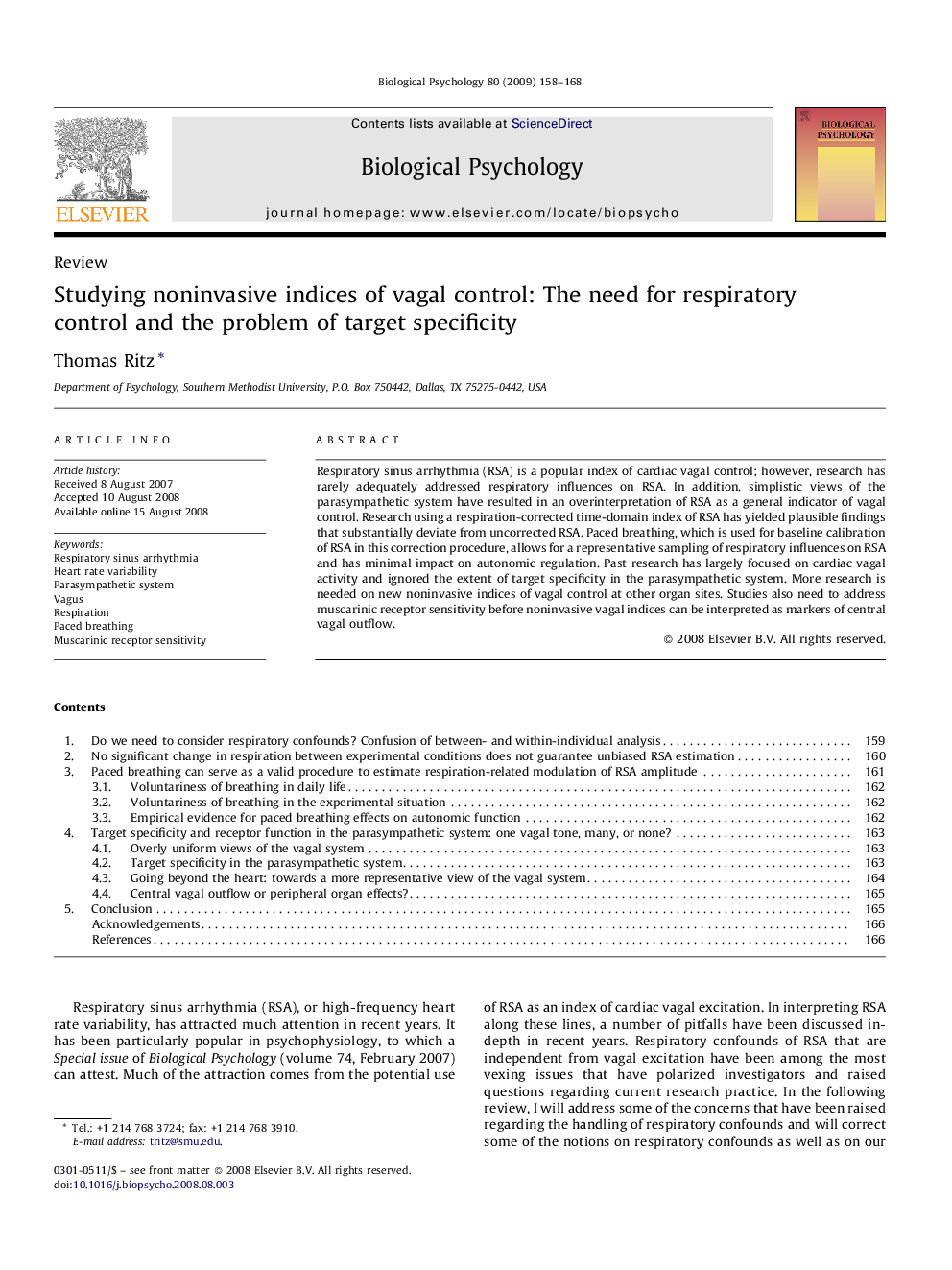| Article ID | Journal | Published Year | Pages | File Type |
|---|---|---|---|---|
| 921494 | Biological Psychology | 2009 | 11 Pages |
Respiratory sinus arrhythmia (RSA) is a popular index of cardiac vagal control; however, research has rarely adequately addressed respiratory influences on RSA. In addition, simplistic views of the parasympathetic system have resulted in an overinterpretation of RSA as a general indicator of vagal control. Research using a respiration-corrected time-domain index of RSA has yielded plausible findings that substantially deviate from uncorrected RSA. Paced breathing, which is used for baseline calibration of RSA in this correction procedure, allows for a representative sampling of respiratory influences on RSA and has minimal impact on autonomic regulation. Past research has largely focused on cardiac vagal activity and ignored the extent of target specificity in the parasympathetic system. More research is needed on new noninvasive indices of vagal control at other organ sites. Studies also need to address muscarinic receptor sensitivity before noninvasive vagal indices can be interpreted as markers of central vagal outflow.
